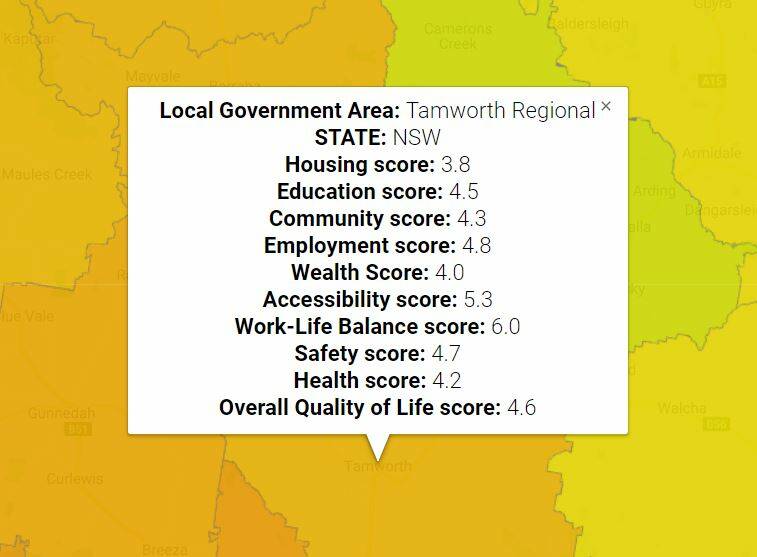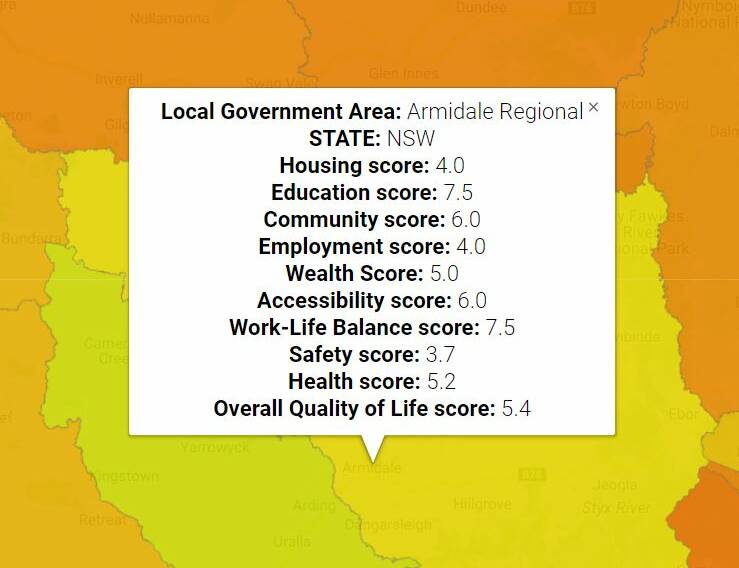
A university study ranking the happiest places in Australia has given Tamworth a ranking of 4.6 out of 10, with wealth, housing and health dragging our average down.
Subscribe now for unlimited access.
or signup to continue reading
Researchers at Bond University took data from the 2016-17 Census, cross referencing it across nine indicators including housing, wealth, employment, work life balance and community.
While Tamworth scored six for work-life balance, a housing score of just 3.8 and a wealth score of four have been identified as areas that could be improved, while health scored just 4.2.
Nillumbik in Melbourne was crowned happiest place in Australia, with wealth and accessibility scores of 10, combining with an employment score of 9.8 for an overall ‘quality of life’ of 8.6.

Meanwhile, suburbs in eastern Sydney, Adelaide and Perth all scored above 8, with only housing bringing the average down.
Locally, Glen Innes and Tenterfield were at the other end of the scale, both scoring a 1.5 and 1.7 for employment and wealth respectively, and an overall 3.6.
Tamworth scored a 4.8 for employment, although one big piece of infrastructure could see the city rocket up the charts, according to Business Chamber president Jye Segboer.
“Unlike our Evocities partners a university is one thing that is lacking, and I would like to see the state and federal governments play a greater role in making this happen – it’s not good enough that we have been overlooked,” he said.
Read more:
“I believe this would increase the demand for skilled jobs and higher salaries. This in turn has a flow on effect on other indicators.”

That is evident in Armidale, which scored an overall 5.4 after scoring 7.5 in both education and work-life balance, as well as a six in community, relating to rates of volunteering, tolerance to other cultures and access to crisis support, 1.7 points above Tamworth.
Fellow Evocities Wagga scored 5.8, while Orange scored 5.4 and Albury 5.2. Meanwhile Gunnedah scored an overall 4.4, Moree a 4.1 and Narrabri a 4.7.
“As our major cities continue to grow governments need to focus on improving services and facilities in regional areas to grow those economies and attract industry to the regions,” Mr Segboer said.

